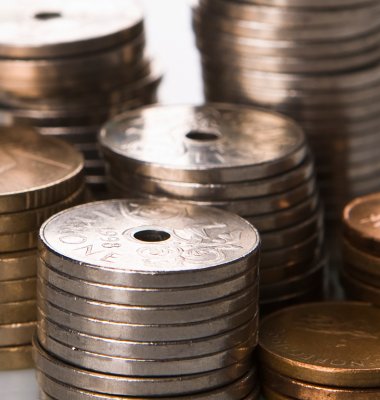The Producer Price Index (PPI) shifted downwards in January by 17.3 percent. This is the second time since October 2022 that the producer prices decreased by more than 16 percent.
– The sharp decline in January is the biggest downturn in the Producer Price Index that we have measured in the 21st century, says Espen Kristiansen, chief of division for price statistics.
Energy goods fell by 25.8 percent and is the largest contributor to the downturn in PPI in January. Decreased prices for the sub-groups extraction of oil and natural gas and In Norway, production and distribution of electricity are the principal parts of this group by approximately 27 percent in January had a large impact. Lower export prices for natural gas and decreasing electricity prices, due to mild weather and increased production of electricity are some of the reasons. The Producer Price Index excluded energy goods increased by 0.9 percent in January.
The PPI in January 2023 is back to the same level as in January 2022 – Before the war in Ukraine, with at twelve-month change of -0.6 percent. While prices on energy goods are at a lower level than a year ago, prices for other goods have pulled in the opposite direction and risen a lot in the past year. The twelve-month change in energy goods is at -5.9 percent, while goods other than energy goods had an increase of 13.9 percent compared to January 2022.
Increased prices for manufacturing
Prices in manufacturing excluding refined petroleum products increased by 1 percent from December to January. The largest contribution to this increase came from food products which increased by 1,4 percent in January 2023 and continues the general upturn since the start of 2021. The prices of processing and preserving of fish, shellfish and molluscs contributed the most to the rise in prices for food products, with an increase of 3.7 percent in January. Prices for processing and preserving of fruit and vegetables moved in the opposite direction, down by 2.8 percent.
Basic metals and chemical industry experienced moderate price growth in January. These industries have stabilized in recent months after falling from a high level in the first half of 2022. Prices on repair and installation of machinery also increased in January, thus continuing the general upturn from 2021.
Prices in refined petroleum products decreased by 6.5 percent in January and contributed to an overall price change for manufacturing as a whole at basically zero percent.
Smaller decline in producer prices on the domestic market
The downturn for the PPI in January is largely impacted by prices on the export market, rather than the domestic market. PPI for the domestic market fell by 2.1 percent, while prices on the export market went down by 23.9 percent. The main cause is the large decrease for prices on natural gas in January, which is mainly exported. The twelve-month growth for goods sold to the domestic market is 17 percent in January 2022.
Updated weights for 2023
The PPI is calculated as a weighted mean of price changes. For the PPI to best reflect the structure of the Norwegian industry, the The weights are calculated based on the production and export values from the latest finalized national accounts. To ensure the basis of weights being as actual as possible, the production values on more aggregated levels are based on estimates from quarterly national accounts. This results in the basis of the weights will always be referenced by the year before the index period.] are updated each year. The new weights take effect from January.
PPI measures the development in prices on quarrying and extraction, including related services, manufacturing, electricity, gas and steam and water supply. The weights on extraction of crude oil and natural gas accounted for 57.5 percent of the total PPI in 2023, a substantial increase from 2022, where these weights accounted for about 42 percent. It is the large increase in the value share for natural gas that contribute the most. Crude oil, on the other hand, had a slightly less importance in 2023 compared to the previous year. Because the value share of extraction of oil and natural gas has such a substantial increase due to the large value of natural gas exports, the weights of most other industries will decrease.
The weights for support activities for petroleum and natural gas extraction is at 3.2 percent of total PPI, down from 5.2 percent in 2022.
Manufacturing makes up for 32.9 percent of the weight in PPI in 2023, which is a decrease from last year’s weight of about 46 percent. All divisions within manufacturing had a falling value share when compared with last year. The industries with the largest weight in 2023 are food products (8.6 percent), refined petroleum products (4.4 percent), the chemical and pharmaceutical industry (3.3 percent) in addition to the basic metals (3.1 percent).
In 2023, the weight share for basic metals is 3.1 percent of total PPI. On the export market, the weight share in this industry was halved from last year.
The falling weight share for basic metals is because the national accounts measurement of processing services (processing of raw materials) is measured differently than before. From 2020, only the value of the service itself is measured as exports, whereas previously the value of the finished goods was measured. This is the case for goods owned by foreign companies when they are processed in Norway.
Electricity, gas and steam received approximately the same weight share in 2023 as in 2022. The weight share makes up 5.8 percent of total PPI in 2023, compared to 6 percent in 2022.
